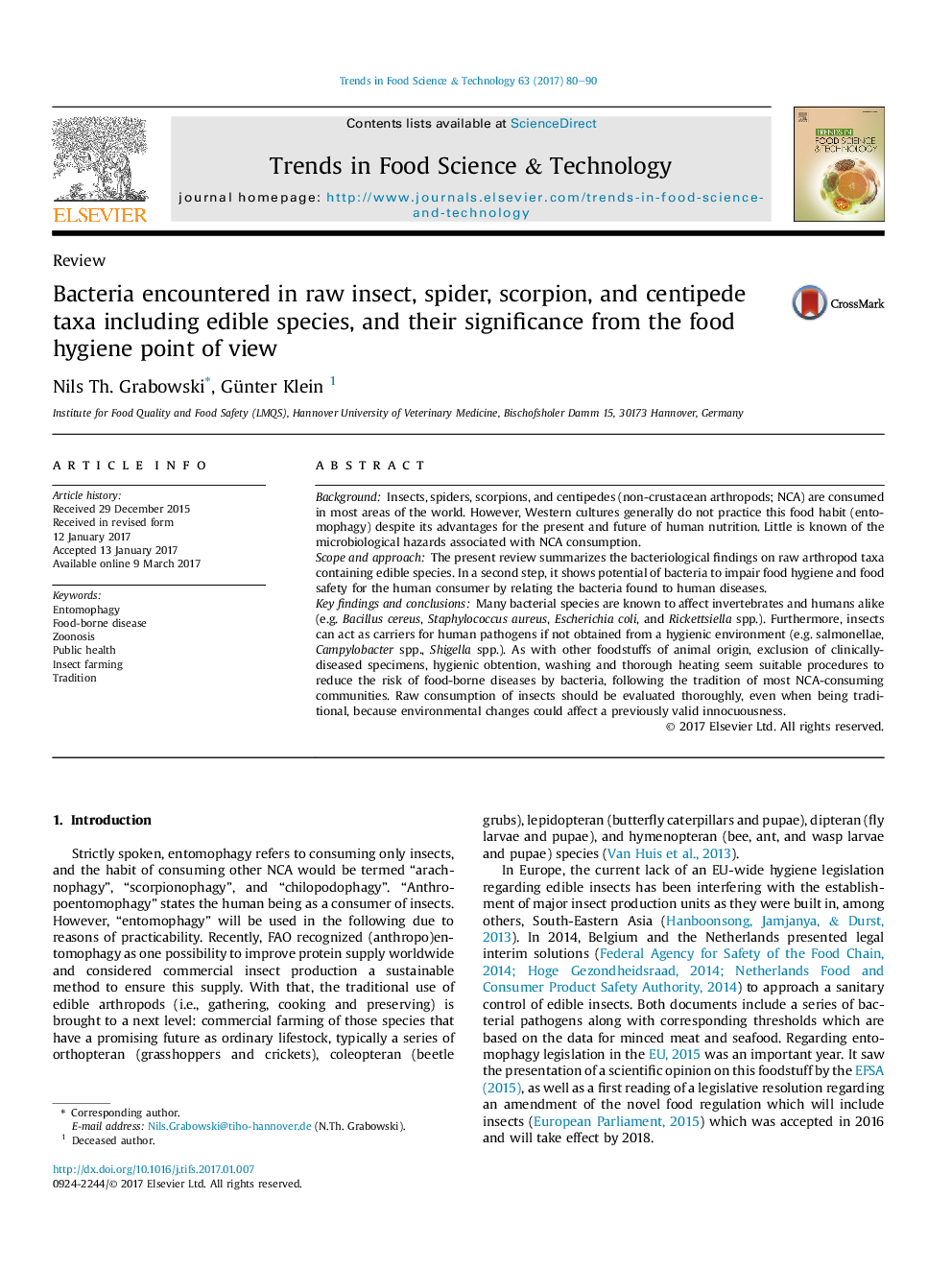| Article ID | Journal | Published Year | Pages | File Type |
|---|---|---|---|---|
| 5523674 | Trends in Food Science & Technology | 2017 | 11 Pages |
â¢The bacteria were grouped into affecting arthropods, humans, both, and spoilage.â¢Unlike other foodstuffs, high bacterial counts are to be expected in insects.â¢Each taxon harbours both taxon-surpassing and specific bacteria.â¢The risk for the consumer depends on the type of trade and his position within it.â¢Thorough heating, hygienic processing and storage contribute to food safety.
BackgroundInsects, spiders, scorpions, and centipedes (non-crustacean arthropods; NCA) are consumed in most areas of the world. However, Western cultures generally do not practice this food habit (entomophagy) despite its advantages for the present and future of human nutrition. Little is known of the microbiological hazards associated with NCA consumption.Scope and approachThe present review summarizes the bacteriological findings on raw arthropod taxa containing edible species. In a second step, it shows potential of bacteria to impair food hygiene and food safety for the human consumer by relating the bacteria found to human diseases.Key findings and conclusionsMany bacterial species are known to affect invertebrates and humans alike (e.g. Bacillus cereus, Staphylococcus aureus, Escherichia coli, and Rickettsiella spp.). Furthermore, insects can act as carriers for human pathogens if not obtained from a hygienic environment (e.g. salmonellae, Campylobacter spp., Shigella spp.). As with other foodstuffs of animal origin, exclusion of clinically-diseased specimens, hygienic obtention, washing and thorough heating seem suitable procedures to reduce the risk of food-borne diseases by bacteria, following the tradition of most NCA-consuming communities. Raw consumption of insects should be evaluated thoroughly, even when being traditional, because environmental changes could affect a previously valid innocuousness.
